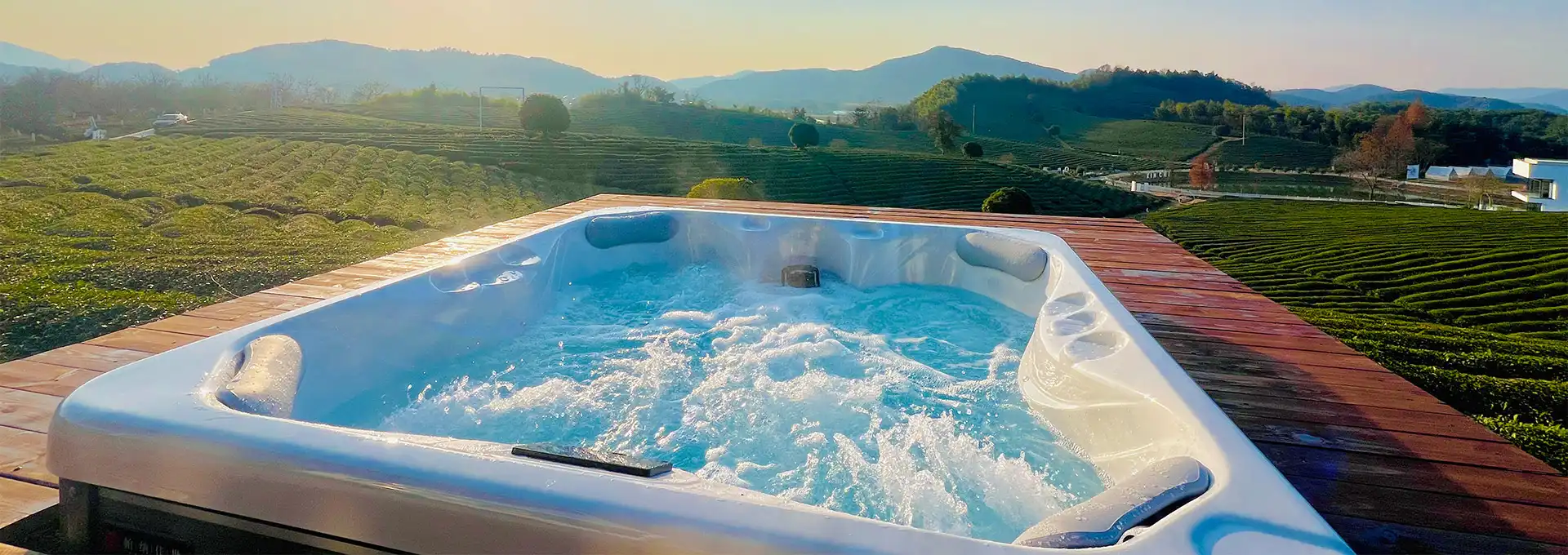How to Lower Alkalinity in Swim Spa?
2024-12-19 16:56:02
Maintaining the proper chemical balance in your swim spa is crucial for ensuring a safe and enjoyable swimming experience. One of the key factors to monitor is alkalinity, which plays a vital role in stabilizing the pH levels of your water. High alkalinity can lead to various issues, including cloudy water, scale formation, and reduced effectiveness of other chemicals. In this blog post, we'll explore effective methods to lower alkalinity in your swim spa, helping you maintain optimal water quality and extend the life of your equipment.
What causes high alkalinity in a swim spa?
Before diving into the solutions, it's essential to understand the factors that can contribute to high alkalinity in your swim spa. Several elements can cause alkalinity levels to rise:
- Source water: The water used to fill your swim spa may naturally have high alkalinity levels, especially if you live in an area with hard water.
- Chemical imbalance: Improper use of chemicals, particularly those containing sodium bicarbonate or other alkaline substances, can lead to increased alkalinity.
- Evaporation: As water evaporates from your swim spa, it leaves behind dissolved minerals, which can concentrate and raise alkalinity levels.
- Frequent use: High bather load can introduce various contaminants and body oils that may affect water chemistry, including alkalinity.
- Environmental factors: Leaves, debris, and rainwater can introduce additional minerals and compounds that may increase alkalinity.
Understanding these causes can help you prevent high alkalinity issues in the future and maintain better water balance. Regular testing and monitoring of your swim spa's water chemistry are crucial for identifying and addressing alkalinity problems early on.
How do you test alkalinity in a swim spa?
Accurate testing is the foundation of proper swim spa maintenance. To effectively manage alkalinity levels, you need to know how to test for it correctly. Here are the steps to test alkalinity in your swim spa:
- Choose the right testing method: You can use test strips, liquid test kits, or digital testers to measure alkalinity. Each method has its pros and cons, but liquid test kits generally provide the most accurate results.
- Collect a water sample: Use a clean, dry container to collect water from your swim spa. Make sure to take the sample from about 18 inches below the water surface and away from any return jets.
- Follow the instructions: Carefully follow the manufacturer's instructions for your chosen testing method. This typically involves adding a reagent to the water sample and comparing the resulting color to a chart.
- Record the results: Note down the alkalinity level in parts per million (ppm). The ideal range for swim spa alkalinity is typically between 80-120 ppm.
- Test regularly: Aim to test your swim spa's alkalinity at least once a week, or more frequently if you notice any changes in water quality or after heavy use.
It's important to note that alkalinity and pH are closely related but not the same. While pH measures the acidity or basicity of the water, alkalinity represents the water's ability to neutralize acids. Both need to be in balance for optimal swim spa performance.
When testing, also pay attention to other chemical levels, such as pH, chlorine, and calcium hardness, as they all work together to maintain water balance. If you're unsure about your test results or how to interpret them, consult with a pool and spa professional for guidance.
What chemicals lower alkalinity in a swim spa?
Once you've determined that your swim spa's alkalinity is too high, you'll need to use the appropriate chemicals to bring it back into balance. The most common and effective chemicals for lowering alkalinity in a swim spa are:
- Muriatic Acid (Hydrochloric Acid): This is a strong acid that quickly lowers both alkalinity and pH. It's highly effective but requires careful handling due to its corrosive nature.
- Pros: Fast-acting, cost-effective, and widely available.
- Cons: Requires safety precautions and can be dangerous if mishandled.
- Sodium Bisulfate (Dry Acid): Also known as pH decreaser, this granular substance is safer to handle than muriatic acid but still effective in lowering alkalinity.
- Pros: Easier to store and handle, less risky for novice users.
- Cons: May take longer to dissolve and affect water chemistry.
- Carbon Dioxide (CO2): While less common for home use, some larger swim spas or commercial installations use CO2 injection systems to lower alkalinity and pH.
- Pros: Automated process, no need for manual chemical addition.
- Cons: Requires specialized equipment and may be cost-prohibitive for residential use.
When using any of these chemicals, it's crucial to follow these steps:
- Calculate the amount of chemical needed based on your current alkalinity level and the volume of water in your swim spa.
- Always add chemicals to water, never water to chemicals.
- Dilute the acid in a bucket of water before adding it to the swim spa to prevent damage to surfaces.
- Add the chemical slowly, preferably near a return jet for better distribution.
- Run the pump for at least 30 minutes after adding the chemical to ensure proper circulation.
- Retest the water after a few hours and adjust as necessary.
Remember that lowering alkalinity is a gradual process. It's better to make small adjustments over time rather than trying to correct high alkalinity all at once. This approach helps prevent overshooting and maintains a more stable water chemistry.
In addition to chemical treatments, you can also employ natural methods to help lower alkalinity:
- Partially draining and refilling your swim spa with fresh water can dilute high alkalinity levels.
- Using a pool cover can reduce evaporation, which contributes to mineral concentration and increased alkalinity.
- Regular cleaning and maintenance can prevent the buildup of contaminants that may affect water chemistry.
By combining these chemical and natural approaches, you can effectively manage alkalinity levels in your swim spa, ensuring a safe and enjoyable swimming environment for all users.
For more information on hot tub installations and to find out more about our products, please feel free to contact us at info@iparnassus.com.
References
- Swim University. (2021). How to Lower Alkalinity in Your Pool.
- Pool Research. (2022). How to Lower Total Alkalinity in a Pool or Hot Tub.
- Leslie's Pool Supplies. (2023). How to Lower Alkalinity in Your Pool.
- In The Swim. (2022). How to Lower Pool Alkalinity.
- Hayward Pool Products. (2023). Understanding Pool Water Chemistry.
- Poolonomics. (2023). How to Lower Alkalinity in a Pool: A Step-by-Step Guide.
- Swim Spas Online. (2022). Maintaining Proper Chemical Balance in Your Swim Spa.
- Master Spas. (2023). Swim Spa Water Chemistry Guide.
- Aqua Magazine. (2021). The Relationship Between pH and Total Alkalinity.
- Pool & Spa News. (2022). Advanced Water Chemistry for Pools and Spas.
Send Inquiry
Related Industry Knowledge
- What Size Swim Spa Should I Buy?
- What Are the Dimensions of a Swim Spa?
- How Thick Should Concrete Be for a Hot Tub?
- What Swim Spa Should I Buy?
- How Long Can I Be in a Hot Tub?
- What is a Swim Spa?
- How to control ph in a spa?
- What is a Swim Spa?
- How a Swim Spa Helps Ease Aches and Pains?
- Is a Swim Spa a Good Investment?



